Blogging Sax Rohmer’s The Yellow Claw – Part Three
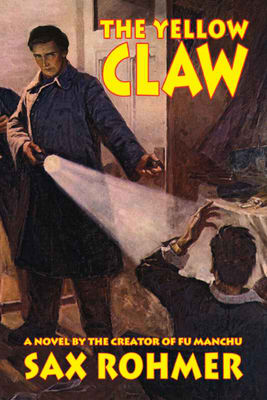
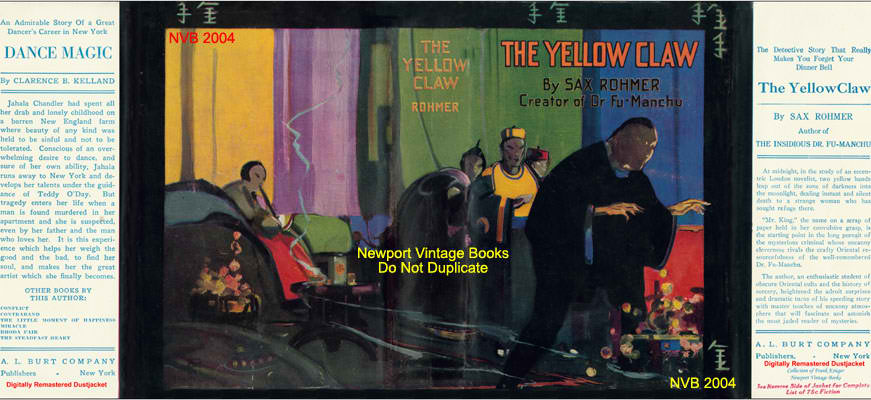 Sax Rohmer’s The Yellow Claw was originally serialized in five installments in Lippincott’s from February through June 1915. The serial was subsequently published in book form later that same year by Methuen Press in the UK and McBride & Nast in the US. The novel chooses to divide the story into four sections. This week, we examine the third part.
Sax Rohmer’s The Yellow Claw was originally serialized in five installments in Lippincott’s from February through June 1915. The serial was subsequently published in book form later that same year by Methuen Press in the UK and McBride & Nast in the US. The novel chooses to divide the story into four sections. This week, we examine the third part.
Rohmer shifts the action back to Inspector Dunbar and Gaston Max’s investigation into the murder at the Leroux residence. Despite the press fingering Soames, the Leroux butler, as chief suspect, the detectives are sure that finding Soames will lead them to the mysterious Mr. King, the real culprit. Gaston Max suggests that Mr. King is a Chinaman with the reasoning that since the deceased was an opium addict, the murder is likely tied to Limehouse.
The French detective adopts the false identities of both Abraham Levinsky and Monsieur Gaston of Paris to infiltrate the bohemian circle that frequents the opium den. Max had stumbled onto the trail of Mr. King in Paris where the opium dealer was operating in an apartment next to the historical residence of the late Joseph Balsamo, alias the infamous Count Cagliostro. From here, Rohmer is on familiar territory at last as Max’s description of his raid on the Paris opium den is decidedly more typical of Rohmer’s Fu Manchu thrillers.
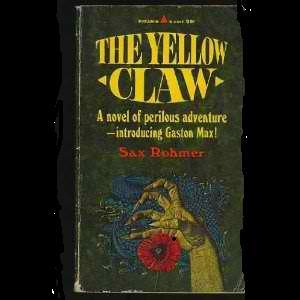
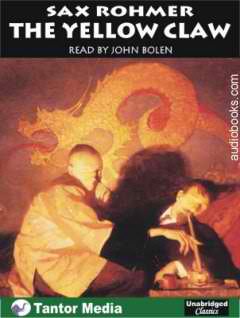 As Max explains, Henry Leroux’s unfortunate wife was more than just an addict, but actually managed the Paris branch of Mr. King’s opium ring until Gaston Max led a successful Surete raid that closed the location. Max subsequently learned that Mr. King was the mastermind behind the international ring from files found in Mrs. Leroux’s office and tracked him to London. Realizing Mr. King may have learned this fact by now, Max fears for Mrs. Leroux’s life.
As Max explains, Henry Leroux’s unfortunate wife was more than just an addict, but actually managed the Paris branch of Mr. King’s opium ring until Gaston Max led a successful Surete raid that closed the location. Max subsequently learned that Mr. King was the mastermind behind the international ring from files found in Mrs. Leroux’s office and tracked him to London. Realizing Mr. King may have learned this fact by now, Max fears for Mrs. Leroux’s life.
Henry Leroux, it turns out, did not share his wife’s habit. The author neglected his wife and was content to establish a credit line for her to amuse herself abroad as she saw fit while he concentrated on his writing and the fame his Martin Zeda series brought him. Leroux is heartbroken to learn that his wife has taken part in opium orgies and has spent thousands of pounds on her habit. He is able to offer little help to Inspector Dunbar, but is eager to see Mr. King brought to justice.
The investigation into the bohemian class leads to the celebrated artist, Olaf Van Noord whose opium-fueled visions inform his futurist works such as “Our Lady of the Poppies.” Mr. Gianapolis, the Greek who manages the Limehouse opium den for Mr. King, successfully recruits new clients from the circle of modern art lovers who are captivated by Van Noord’s nightmarish works and express an interest in exploring the hidden side of London that inspired the artist.
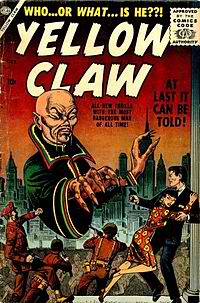
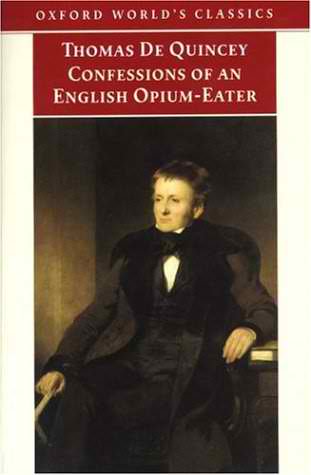 Meantime, Gaston Max has set his sights on Sir Brian Malpas, an MP whose addiction acquired when he was stationed in Peking has led him into the same trap as the bohemian set. The Frenchman, in his guise as Monsieur Max, poses as a fellow opium addict and confides in the minister. Sir Brian happily agrees to introduce him to his friend in London who will be able to help relieve of his sufferings.
Meantime, Gaston Max has set his sights on Sir Brian Malpas, an MP whose addiction acquired when he was stationed in Peking has led him into the same trap as the bohemian set. The Frenchman, in his guise as Monsieur Max, poses as a fellow opium addict and confides in the minister. Sir Brian happily agrees to introduce him to his friend in London who will be able to help relieve of his sufferings.
Mr. Gianapolis is only too happy to welcome Monsieur Max as a new client upon Sir Brian’s recommendation. The men discuss DeQuincey with some disdain, though it appears that Rohmer’s knowledge of opium dreams (the drug is personified by a seductive Eurasian woman who presides over a grove of a million apes) was almost entirely derived from DeQuincey’s notorious Confessions of an Opium-Eater. Max is frustrated to learn that Gianapolis has never set eyes on Mr. King, so cautious is the criminal mastermind that even his deputy has never seen him in person. The Frenchman learns, to his shock, that the branches of Mr. King’s opium houses extend to far more nations than even he had feared. Gaston Max realizes that bringing down this group will take the cooperation of the world’s many police forces. Quite a daunting task!
The third part of the novel concludes with Max’s arrival at the Limehouse residence of Mr. King. Naturally, the chauffeured limousine that brings him there is plunged in darkness so that he can never be sure of his precise location. Ho-Pin, Mr. Gianapolis’ Chinese manservant escorts Max to the observation room since it is Mr. King’s custom to observe a habitué on his first visit to ensure that he is not an undercover police official. This third part does much to build suspense and develop the story along lines more traditional to readers of Rohmer’s Yellow Peril thrillers. Expectations were raised to see how Gaston Max would unravel the mystery of Mr. King in the final installment as we shall see next week.
William Patrick Maynard was authorized to continue Sax Rohmer’s Fu Manchu thrillers beginning with The Terror of Fu Manchu (2009; Black Coat Press). A sequel, The Destiny of Fu Manchu was published April 2 by Black Coat Press. Also forthcoming is a collection of short stories featuring an original Edwardian detective, The Occult Case Book of Shankar Hardwicke and an original hardboiled detective novel, Lawhead. To see additional articles by William, visit his blog at SetiSays.blogspot.com